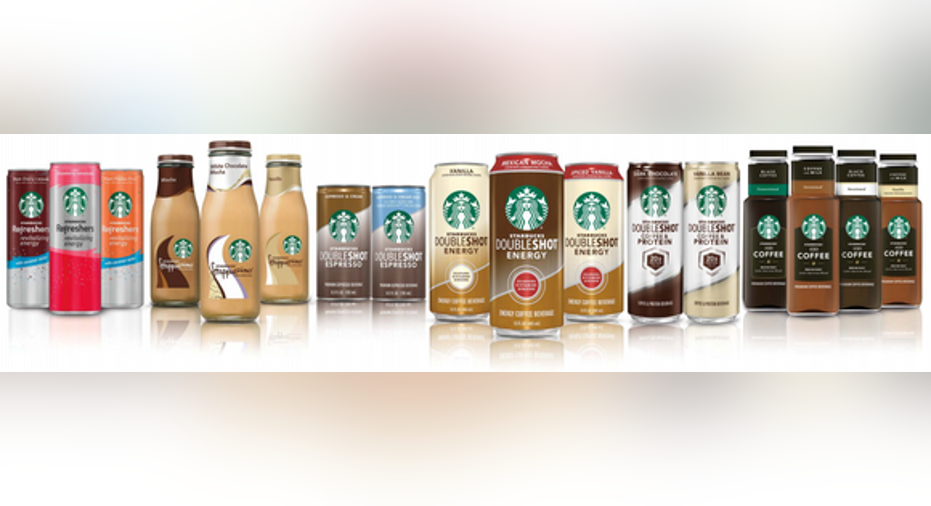Why Starbucks Corporation Is Pushing Channel Development

Image: Starbucks Corporation.
Here's a question for knowledgeable Starbucks Corporationinvestors: Can you name the company's most profitable segment? It's not China/Asia Pacific, although CAP typically has the highest revenue growth rate in any given quarter. And it's not the "Americas," though this segment is the largest in terms of revenue by far.
How about Europe, Middle East, and Africa? EMEA merits the distinction of having grown its operating income the most on a percentage basis of all divisions last last year. But it's not the most profitable.
That leaves Channel Development, Starbucks' revenue stream which seeks to exploit opportunities primarily in the packaged consumer goods market. Broadly speaking, this segment focuses on sales outside of the company's retail coffee operations. The company defines the segment more specifically as follows in its fiscal 2015 annual report:
"Our Channel Development segment includes roasted whole bean and ground coffees, premium Tazoteas, Starbucks- and Tazo-branded single-serve products, a variety of ready-to-drink beverages, such as Frappuccino, Starbucks Doubleshotand Starbucks Refreshersbeverages, and other branded products sold worldwide through channels such as grocery stores, warehouse clubs, specialty retailers, convenience stores, and U.S. foodservice accounts."
Last year, Channel Development's revenue of $1.7 billion made up 9% of Starbucks' total revenue of $19.2 billion. The segment posted $654 million in operating income, and an operating income margin of 37.8%. For comparison, operating income margin for the Americas, CAP, and EMEA last year fell in at 24.2%, 20.9%, and 13.8%, respectively.
Why is Channel Development more profitable than the retail segments? In recent quarters the company has cited leverage on cost of sales from its North American Coffee Partnership as a significant factor behind Channel Development's increasing margins. The North American Coffee Partnership is the 50/50 joint venture Starbucks set up with PepsiCo, in 1994, to distribute ready-to-drink coffees like bottled Frappuccino. The line-up, as the preceding photo shows, has expanded over the years to include bottled espressos, lattes, and energy drinks.
The venture claims to have captured 97% of the market for ready-to-drink coffee in the United States. This may be true, but globally, Starbucks still has much market share to gain in this and related categories. Last year, PepsiCo noted that the joint venture has grown into a retail business with annual sales of $1.5 billion.That's dwarfed by the Coca-Cola Co.'s portfolio, which sports three separate brands in ready-to-drink coffee and tea that each sell more than $1 billion annually: Georgia Coffee, a powerhouse brand in Japan, and the domestically sold Gold Peak and Fuze bottled teas.
Ready-to-drink is slated to be a pillar of Channel DevelopmentDuring Starbucks' annual shareholder meeting in late March, Michael Conway, the company's head of Global Channel Development, presented the business segment's focus areas for the foreseeable future. Conway emphasized two "pillars" of Channel Development strategy. One of these is targeted growth in the global ready-to-drink market.
An example of this emphasis is the company's upcoming summer roll-out of cold-brew coffee in the United States. Cold-brew coffee presents an opportunity for Starbucks in that its popularity is rising among coffee aficionados, but most brand penetration is occurring among boutique companies. The young market isn't mature enough yet to be dominated by a single label, so Starbucks is eager to step in with its own cold-brew offering.
Conway also announced that Starbucks would significantly increase its ready-to-drink ground game in China, indicating that the company will soon have distribution in every major city in the country. This builds on momentum from last year, when Starbucks began selling bottled drinks in Latin American markets through its joint venture with PepsiCo. In an update on that foray, Starbucks has confirmed that the partnership will serve 10 distinct Latin American markets by the end of this year, advancing its bid to crack what the partnership estimates to be a $4 billion annual market.
A second pillar also promises future gainsIn his remarks at the annual shareholders meeting, Michael Conway unsurprisingly named single-serve coffee as the second pillar in the company's Channel Development strategy. Conway noted that Starbucks enjoys the No. 1 brand position in the U.S. in this category, and has recently renegotiated its K-cup supplier agreement with Keurig Green Mountain.
Starbucks, of course, isn't content with the top spot stateside. It wants to hold the first brand position in single serve coffee globally, a market that Starbucks management estimates at $8 billion by itself.The coffee purveyor will begin this long march by soon offering branded espresso pods in Europe compatible with Nestle S.A.'s Nespresso home brew machines. The Nespresso pod is the reigning single-serve format on the continent, as pervasive as the K-Cup is in America.
Starbucks' Channel Development encompasses a number of smaller revenue generators. For instance, the segment runs a thriving food service business that supplies fresh coffee and food to institutions including major college campuses. But Starbucks will allocate a healthier share of dollars to ready-to-drink beverages and single-serve coffees. Enormous market potential exists in these two categories, along with the higher margins associated with packaged goods versus retail store operations. Characteristically, Starbucks wants to exploit this potential sooner rather than later.
The article Why Starbucks Corporation Is Pushing Channel Development originally appeared on Fool.com.
Asit Sharma has no position in any stocks mentioned. The Motley Fool owns shares of and recommends PepsiCo and Starbucks. The Motley Fool recommends Coca-Cola and Nestle. Try any of our Foolish newsletter services free for 30 days. We Fools may not all hold the same opinions, but we all believe that considering a diverse range of insights makes us better investors. The Motley Fool has a disclosure policy.
Copyright 1995 - 2016 The Motley Fool, LLC. All rights reserved. The Motley Fool has a disclosure policy.



















